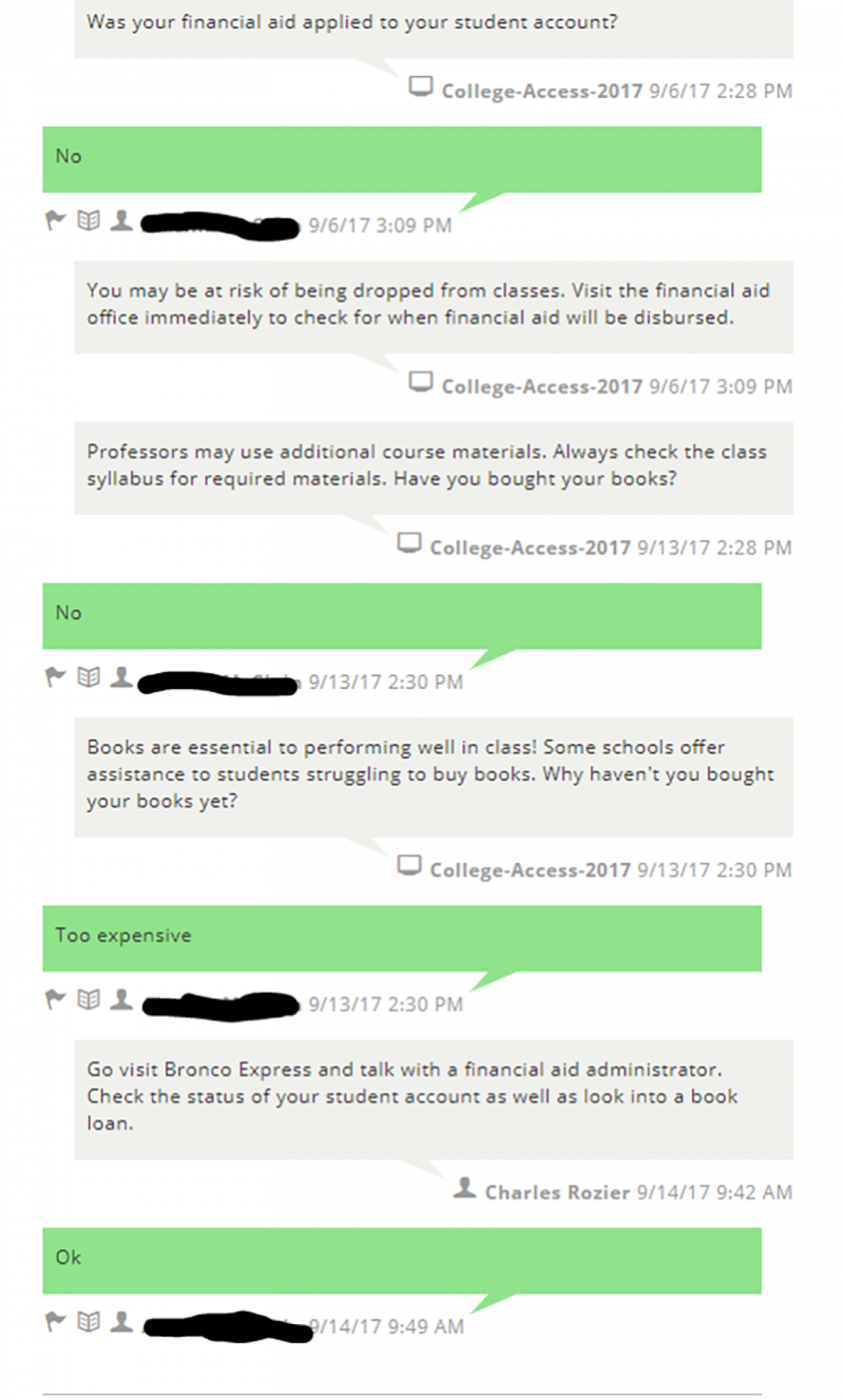Text messages and rap videos. How the state is telling poor students they too can afford college.

On the second floor of a building in downtown Lansing, state employees text individual teenagers, reminding them to buy textbooks and check their scholarship funds.
Call it Big Brother. Call it Helicopter Mom. Anne Wohlfert calls it something else:
A great use of taxpayer money.
“Trying to figure out how to pay for college can be overwhelming,” said Wohlfert, director of the Student Financial Services Bureau in the Michigan Department of Treasury. “Many college-bound students and their families don’t know where to begin.”
MORE COVERAGE: U-M asks, ‘Where are the poor kids?’
Wohlfert worked in financial aid at Western Michigan University and Oakland Community College before helping launch Mi Student Aid, a federally-funded, state-run effort to help get more low-income students into college.
The program, now in its third year, helps guide students, particularly those from families where no one has attended college, through the maze of financial aid documents and college cost comparisons.
Four workers travel the state giving seminars on financial aid. This week, they’re crisscrossing the Upper Peninsula, with 29 events scheduled around the state before Thanksgiving. You can see the schedule of meetings here.
Those meetings are just the beginning of the office’s interaction with students, as officials try to reach teens where they live – on social media.
“We can send letters, but students don’t read them,” Wohlfert said. “So we’re on Facebook, Twitter, Instagram and Snapchat.” They even send personal text messages to students helping them find financial aid for textbooks for example.

And of course there’s a rap video, starring Charles Rozier, who works in the Mi Student Aid office.
Michigan has a lower percentage of adults with bachelor’s degrees (27 percent) than the national average (30 percent). Students from low-income families enroll in college at a lower rate (about 50 percent) than their wealthier classmates (about 70 percent).
Low-income students often assume they can’t afford college, Wohlfert said. It’s an assumption not helped by Michigan’s low level of state-funded scholarships.
“When I went to college in the ‘70s, the Michigan Competitive Scholarship paid my tuition,” Wohlfert said. “Now it pays for a book.”
Paying for college “can be done,” she said. “But you have to know how to navigate the system.”
That’s tough to do for students from families that don’t know how college costs work.
“A lot of colleges now send students a PIN number and tell them to look online and see their (student aid) award letter and click if they accept,” Wohlfert said. If it says the expected family contribution is $4,000, they think, ‘I don’t have $4,000 right now so I can’t go,’ when that’s not what it means.” (In that example, a student would be expected to pay $4,000 during the school year, through direct payment or loans, but wouldn’t have to pay $4,000 before starting classes.)
It’s too early to tell whether the program is helping. The most recent data showing the college-going rates of high school students is from the first year of the Mi Student Aid effort.
Mi Student Aid gets its funding from the federal government. It costs “under a million dollars” a year, Wohlfert said, and “we’re starting to make a dent, but there is so much we need to do. We could do more with more (funding).
“There are a lot of people who have great potential, and we don’t want to lose it,” she added. “We want people to reach their full potential because that helps not only them, but the whole state.”
See what new members are saying about why they donated to Bridge Michigan:
- “In order for this information to be accurate and unbiased it must be underwritten by its readers, not by special interests.” - Larry S.
- “Not many other media sources report on the topics Bridge does.” - Susan B.
- “Your journalism is outstanding and rare these days.” - Mark S.
If you want to ensure the future of nonpartisan, nonprofit Michigan journalism, please become a member today. You, too, will be asked why you donated and maybe we'll feature your quote next time!